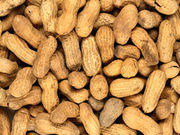Exposure therapy for infants and toddlers leaves 78 percent desensitized
THURSDAY, Aug. 18, 2016 (HealthDay News) — Oral immunotherapy for peanut allergies may work better if it’s given to children earlier, even as young as 9 months, according to a study published online Aug. 10 in the Journal of Allergy and Clinical Immunology.
The new study included 37 children between 9 months and 36 months old. They were given either high- or low-dose peanut exposure daily for a median of 29 months. All of the children were given no peanuts for a month after the treatment. Then, peanut protein was reintroduced. Parents were given special sealed packets of peanut protein and instructed to sprinkle it on foods such as pudding or ice cream.
The researchers found that 78 percent of the infants and toddlers on either treatment dose were able to eat peanut-containing foods without having an allergic reaction. The results held whether the children got the low-dose therapy, 300 mg of peanut protein a day, or the high dose, 3,000 mg. The researchers also compared the 37 children with 154 other peanut-allergic children, and found those who got exposure therapy were 19 times more likely to be able to eat peanuts without an adverse reaction (relative risk, 19.42).
“After the study we have continued to follow them and the group is still doing well,” study leader Wesley Burks, M.D., a pediatric allergist at the University of North Carolina at Chapel Hill School of Medicine, told HealthDay. The follow-up period is now two years, and the benefits are longer-lasting than other studies have found, he said. Treating children earlier may also spare them gastrointestinal symptoms. While older children aged 5 to 7 often complain of stomach problems during exposure therapy and must drop out, “we didn’t see that in these younger kids,” Burks said.
Copyright © 2016 HealthDay. All rights reserved.








